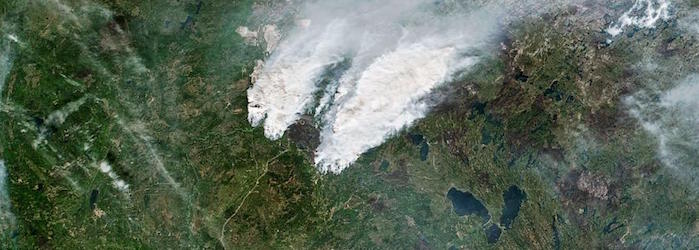A monster forest fire that began in early May is still burning in Canada’s vast, isolated north woods. That may seem of little consequence to anyone other than the 88,000 residents of Fort McMurray forced to flee as the blaze swept into the northern Alberta city. Yet large fires like these matter immensely to the rest of the planet.
Fires so intense that they consume millions of acres of trees and scorch the soil on the forest floor have become the kind of extreme disruptors that are remaking the boreal forest and transforming its role as one of the world’s great protectors against global warming. The boreal forest is Earth’s single largest land habitat, and it stores about 30 percent of the carbon found on the planet’s surfaces—more than any other terrestrial ecosystem. The forest also provides refuge for animals and birds as they relocate from southern habitats that have become too warm.
Researchers with NASA's Arctic-Boreal Vulnerability Experiment (ABoVE) are examining the role of boreal forest fires in the global carbon cycle. Data collected by Bourgeau-Chavez et al. measures the effects of the record-breaking 2014 wildfires in Canada's Northwest Territories: ABoVE: Burn Severity, Fire Progression, Landcover and Field Data, NWT, Canada, 2014. This data set provides peatland landcover classification maps, fire progression maps, and vegetation community biophysical data collected from areas that were burned in 2014.
ABoVE is a NASA Terrestrial Ecology Program field campaign that will take place in Alaska and western Canada between 2016 and 2021. Climate change in the Arctic and Boreal region is unfolding faster than anywhere else on Earth. ABoVE seeks a better understanding of the vulnerability and resilience of ecosystems and society to this changing environment.
Continue reading the National Geographic article about the ABoVE project here: Forest Fires Can Heat Up the Whole Planet.
Data from the ABoVE campaign is available from the ORNL DAAC: ABoVE Data


